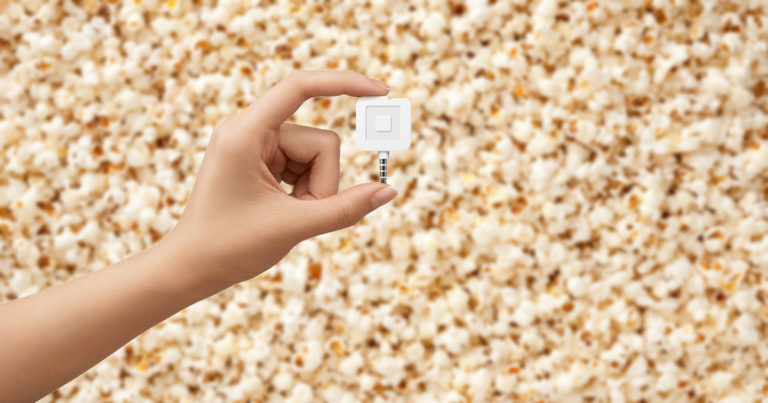
Don’t let a cashless customer walk away that easily.
By adding a cheap credit card reader, your pack, troop or crew will be equipped to accept plastic for popcorn sales and other in-person, show-and-sell-type fundraisers. With a few taps, the money can be deposited into your unit’s bank account in a day or two.
Units that add these readers see an instant increase in sales. I’ve heard from packs and troops that have enjoyed a jump of 10 to 20 percent once they started taking credit cards.
There are downsides to these readers. First, there’s an up-front cost for the newer readers that accept chip cards. (I’ll tell you why a chip-enabled reader is a necessity later in the post.)
Then there’s the fee. The companies behind the readers charge a fee per swipe or chip read. The fee can be up to 2.75 percent. That’s not nothing, but sacrificing 82.5 cents on a $30 bag of caramel corn is better than missing out on the sale entirely.
What’s new in credit card readers?
I first blogged about accepting credit cards for popcorn sales in 2012. Five years later, the three readers I mentioned back then — from Square, PayPal and Intuit/QuickBooks — remain the three best options.
But many other aspects of credit card readers have changed.
For one, the companion apps that pair with the physical readers have improved greatly.
Now you can email receipts to customers with ease, accept tips and give access to multiple people. That means, for example, you could allow a parent to process sales but leave refund power to a handful of registered leaders.
What’s new in credit cards?
Credit card technology has changed, too. Credit and debit cards now come with built-in chips meant to make the card information harder to steal.
Having a card reader that can accept chips isn’t just a good idea; it could reduce your liability in fraud cases. As of Oct. 1 2015, sellers — not credit card issuers — are on the hook for fraudulent charges when the customer has a chip card but the seller swipes instead.
Also new: contactless payment options like Apple Pay and Android Pay that use near-field communication (NFC) to process payments.
What are the best options for card readers?
Most Scouters I’ve heard from use one of these three readers:
| Name | Square Chip Card Reader | PayPal Here Chip Card Reader | QuickBooks GoPayment EMV Card Reader |
| Price for reader | $29.00 | $79.00 | $30 |
| EMV/chip reader | Yes | Yes | Yes |
| Contactless (Apple Pay, NFC) | No (but available in $49 version) | Yes | No |
| iOS compatible | Yes | Yes | Yes |
| Android compatible | Yes | Yes | Yes |
| Commission | 2.75% | 2.70% | 2.40% + 25 cents per transaction |
| Free version? | Yes (lacks chip reader) | Yes (lacks chip reader) | No |
| Website | Here. | Here. | Here. |
| Photo |  |  |  |
Note: Many of these readers plug into your phone or tablet’s headphone jack. If you have a device like an iPhone 7 that lacks a 3.5-millimeter headphone jack, you can use Apple’s $9 Lightning-to-headphone adapter. Or just use another device, like an iPad, older iPhone, or Android phone or tablet.
Accepting dues and other unit payments
Now that you have the card reader and account set up, why not use it to accept other unit-related payments? This could include dues, camp fees and more. It’s all about convenience for our Scouting families.
Once again, don’t forget about the processing fee. Some units, including the troop of which I’m a member, pass that fee along to the Scout or Scouter. For example, a troop whose yearly dues are $100 would charge $102.75 to those using credit cards.
What else should I consider when using these?
- Read the fine print for additional fees. Some of these companies charge for things like manually keyed-in card numbers.
- Remember that these readers work best when the phone is connected to the internet. Some units have used an old iPhone, set it up on a prepaid plan — $40 or so for 1 GB of data, which is plenty — and set up the phones so the only icons visible are the chip-reader app and the calculator app. “The extra sales more than made up for the expense of the cellular plan and the service charge for taking cards,” one leader said.
- Use the built-in memo field within the app to categorize each transaction. This will help you know whether that random $75 was for popcorn sales or winter camp.
- Units already using PayPal for things like rechartering fees or camps should probably go with the PayPal reader. It will work with your existing PayPal account.
- Take time to add your product line into the sales system. This means each transaction is just a matter of tapping which product was being purchased and processing payment.
Powered by WPeMatico
